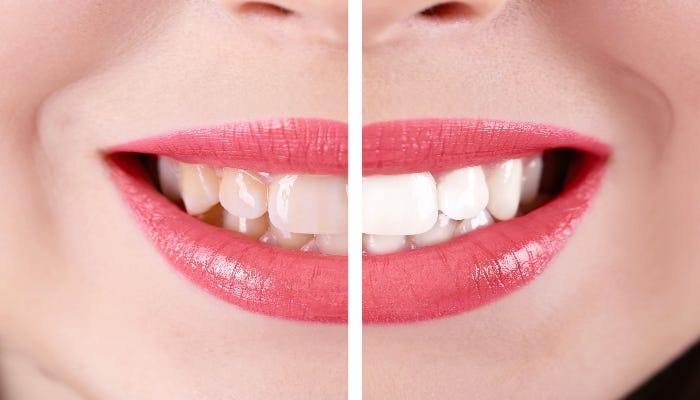In the field of aesthetic dentistry, porcelain crowns stand out today with both their natural appearance and durability. Among these, Zirconium and Emax crowns are the most preferred options, each suited to different types of teeth and patient needs. However, deciding which material is more appropriate in a given case can often be confusing for patients.
In this article, we will examine Zirconium and Emax crowns in detail as they are applied at Dent Evka Clinic, focusing on their suitability for different teeth, their advantages and disadvantages. We will also include insights from our expert team: Dr. Emre Sarkın, Dr. Özlem Gülbenli Yılmaz, and Orthodontics Specialist Dr. Muhammet Gürcan, who play a key role in the treatment process.
What is Zirconium Crown?
Zirconium crowns are porcelain restorations reinforced with a zirconium oxide base. Thanks to their high durability, they are particularly suitable for back teeth that are exposed to strong chewing forces. Unlike traditional metal-supported porcelain crowns, zirconium crowns offer a more natural appearance while eliminating the risk of metal allergies.
Advantages of Zirconium Crowns
- High durability and fracture resistance
- Biocompatibility – no risk of metal allergy
- Natural, aesthetic appearance closer to real teeth
- Suitable for both anterior and posterior teeth
Disadvantages of Zirconium Crowns
- Slightly less translucent than Emax in anterior teeth
- Higher cost compared to conventional porcelain
According to Dr. Emre Sarkın, zirconium crowns are especially preferred for molars due to their strength and long-term stability, providing both functional and aesthetic benefits.
What is Emax Crown?
Emax crowns are made of lithium disilicate glass-ceramic and are known for their superior translucency and natural aesthetics. Thanks to this feature, they are particularly preferred for anterior teeth where aesthetics are most important.
Advantages of Emax Crowns
- Excellent light transmission and natural appearance
- High aesthetic success, especially in the front teeth
- Metal-free and biocompatible
- Resistant to staining and discoloration
Disadvantages of Emax Crowns
- Less resistant to very high chewing forces compared to zirconium
- Limited use in posterior teeth with strong bite pressure
As Dr. Özlem Gülbenli Yılmaz emphasizes, Emax crowns offer one of the most aesthetic solutions for patients who want a flawless smile design, particularly in the visible areas of the mouth.
Which Material is Suitable for Which Tooth Type?
- Anterior Teeth (Incisors and Canines): Emax crowns are often the first choice due to their superior aesthetics.
- Posterior Teeth (Premolars and Molars): Zirconium crowns are more suitable thanks to their durability against chewing forces.
- Mixed Treatments: In some cases, zirconium can be used for posterior teeth and Emax for anterior teeth, ensuring both strength and aesthetics.
Orthodontics Specialist Dr. Muhammet Gürcan points out that the choice of material should always be personalized, taking into account the patient’s bite force, tooth structure, and aesthetic expectations.
Treatment Process at Dent Evka Clinic
- Initial Examination & Planning: Detailed oral and dental examination, digital scans, and smile design planning.
- Tooth Preparation: Minimal reduction of the tooth surface to prepare it for the crown.
- Digital Impressions: Using CAD/CAM technology for high-precision results.
- Temporary Crowns: To protect the teeth until permanent crowns are placed.
- Final Placement: Zirconium or Emax crowns are cemented with perfect fit and natural aesthetics.
Conclusion
Both zirconium and Emax crowns are among the most effective solutions in aesthetic dentistry. The choice depends on the location of the tooth, functional requirements, and the patient’s aesthetic expectations. At Dent Evka Clinic in İzmir, our experienced team ensures that each patient receives the most appropriate treatment, combining durability, aesthetics, and comfort for a healthy and confident smile.

